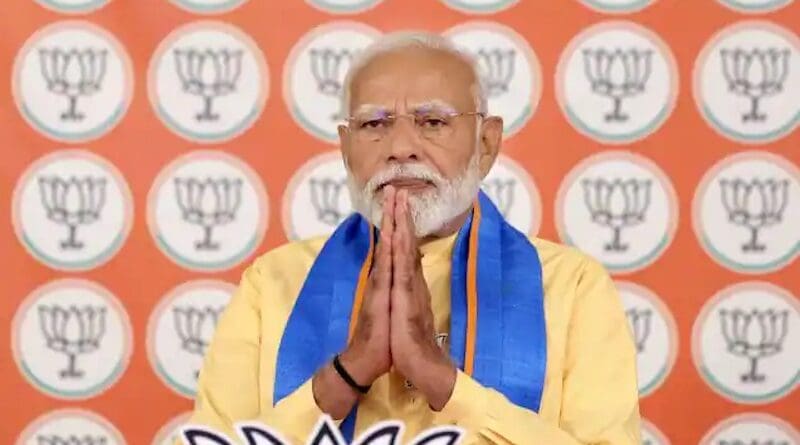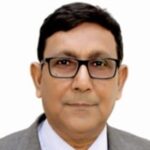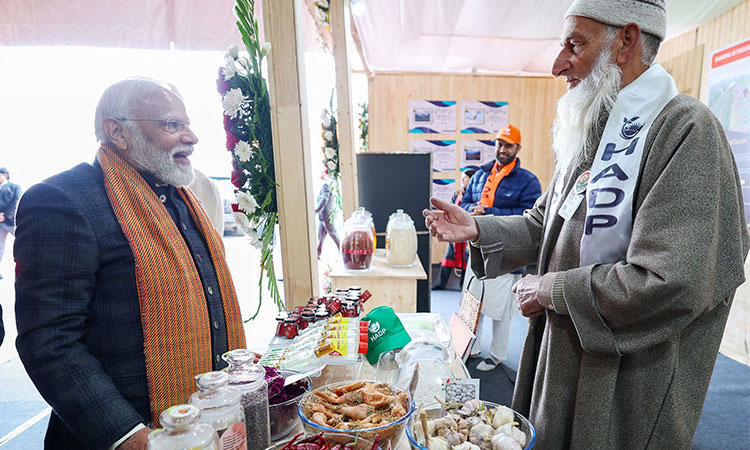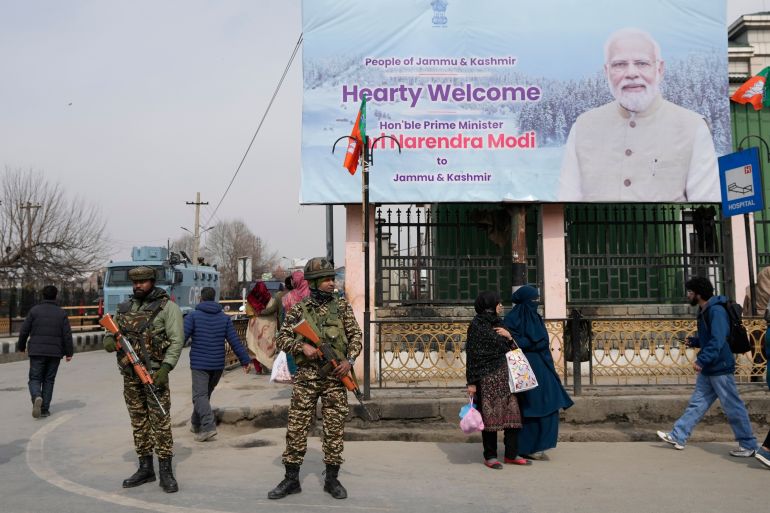Thu, June 22, 2023

US President Joe Biden shakes hands with India's Prime Minister Narendra Modi at the White House (ANDREW CABALLERO-REYNOLDS)
President Joe Biden on Thursday called religious freedom a "core principle" for India and the United States, in a gentle nudge as he welcomed India's Hindu nationalist prime minister, Narenda Modi.
Modi has faced criticism over the rights of religious minorities in India, with rights groups alleging a blind eye to vigilante violence against Muslims and Christians.
"Equity under the law, freedom of expression, religious pluralism and diversity of our people -- these core principles have endured and evolve," Biden said at a ceremonial welcome to Modi at the White House. "Even as they have faced challenges throughout each of our nations' histories, and will fuel our strength, depth and future."
Biden and Modi, however, overwhelmingly stressed the positive as they opened talks set to focus on trade and defense, with the two democracies both seeing challenges from a rising China.
"I have long believed that the relationship between the US and India will be one of the most defining relationships of the 21st century," Biden said.
Modi said that both India and the United States had societies "based on democratic values."
"Both of our countries take pride in their diversity," Modi said. "Both of us believe in the fundamental principle of 'in the interest of all,' 'for the welfare of all.'"
"The two countries are committed to work together for the global good and for global peace, stability and prosperity. Our strong strategic partnership is a clear proof of the power of democracy," Modi added.
Brian Bennett
Thu, June 22, 2023

President Joe Biden (R) and Indian Prime Minister Narendra Modi participate in an arrival ceremony at the White House on June 22, 2023 in Washington, DC.
In nine years as India’s prime minister, Narendra Modi has rarely taken questions from the press. When a reporter at the White House asked Thursday what steps he was willing to take to improve the rights of Muslims and other minorities in India, Modi denied the premise.
The U.S. State Department has documented troubling encroachments on political rights and expression in India under Modi’s watch, and a rise in religious intolerance toward Muslims and other minorities. But, with President Biden standing next to him under the chandeliers of the East Room, Modi ignored all that.
“There is absolutely no discrimination,” Modi said.
It was a stark denial from India’s Prime Minister, who was being largely embraced during his trip to Washington but also challenged. After his White House visit, he was headed to the Capitol, where a handful of lawmakers planned to boycott his joint address to Congress. After that, Modi will be a guest of honor at a state dinner, only the third head of state to receive such an honor during Biden’s presidency.
Biden had said heading up to Modi’s visit that he would not ignore Modi’s human rights record. But if he raised any of those concerns with Modi during this visit, Biden left those behind closed doors.
“The prime minister and I had a good discussion about democratic values,” Biden said. “That’s the nature of our relationship. We are straightforward with each other and we respect each other.”
That respect is paying off for both countries. Modi and Biden announced this week a laundry list of significant ways that India and the U.S. are increasing military and business ties.
Aides to Biden and Modi have met for months to find ways to streamline tech and military cooperation between the two countries, who have not been traditional allies. The effort is part of Biden’s broader effort to counter China’s influence in the Indo-Pacific and reduce the U.S. supply chain’s dependence on Beijing.
Timed for Modi’s trip to Washington, the two countries announced a deal for India’s Hindustan Aeronautics to build General Electric fighter-jet engines, a long-term move that stands to will weave India more tightly into the U.S. military industrial complex for decades to come.
India also agreed to buy MQ-9B SeaGuardian armed drones from San Diego-based General Atomics Aeronautical Systems, which will increase India’s aerial surveillance abilities in the region. And the U.S. is expanding “trusted shipyard” agreements with India to allow more US naval vessels to be repaired in Indian shipyards near Chennai, Mumbai and Goa.
In addition, the chip manufacturer Micron announced an $800 billion investment in a semiconductor assembly plant and test facility in India. And the U.S. company Applied Materials will build a new semiconductor research center in India.
Those decisions put India on track to be a closer military ally to the U.S. than it has been in the past. During the Cold War, India kept the U.S. at arm’s length and purchased Russian military equipment. President Bill Clinton worked to bridge ties with New Delhi in the 1990s, but in recent decades India’s leaders have been reluctant to be seen as a full throated ally of the U.S.
Modi himself has had tense relations with the U.S. before. In 2005, when Modi was the chief minister of the state of Gujarat, the U.S. denied him a diplomatic visa over violence by Hindu mobs in the state in 2002 that killed more than a thousand people, most of them Muslim. But whatever strain that may have caused, has eased. Modi previously addressed Congress in 2016, and he held a joint rally with Donald Trump in Houston in 2019.
Read more: Indian Americans in Congress Plan to Attend Modi Speech Amid Calls for Boycotts
Speaking in the White House on Thursday, Modi said his visit would have a “special importance in the history of India-America relations.”
“Our discussions today and the important decisions we have taken have added a new chapter to our comprehensive and global strategic partnership. They have given it a new direction and a new energy,” Modi said.
Earlier in the day, Modi’s arrival on the South Lawn of the White House was cheered on by 7,000 Indian-Americans. In his remarks greeting Modi, Biden said that he has “I’ve long believed that the relationship between the United States and India will be one of the defining relationships of the 21st century.”














